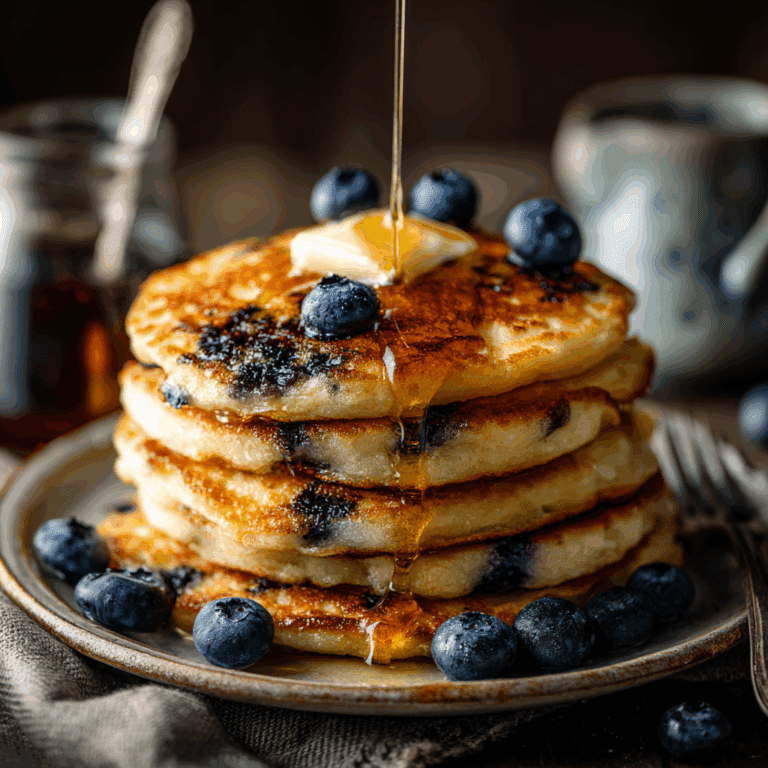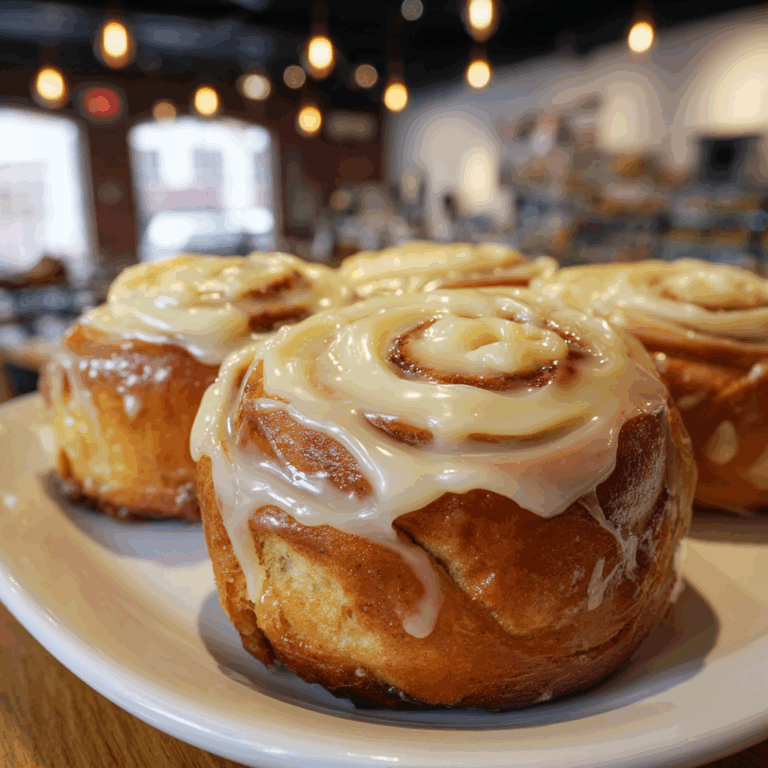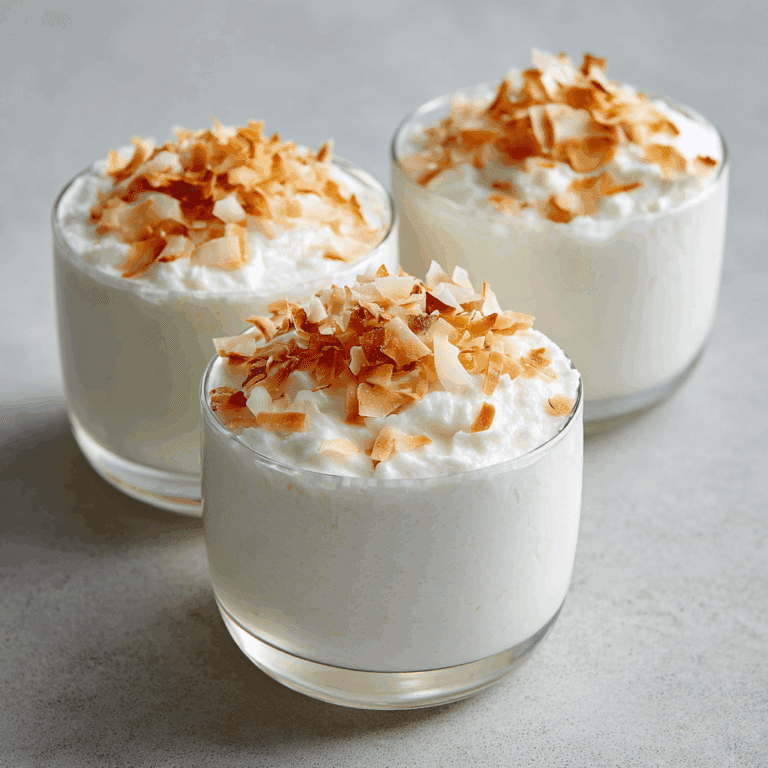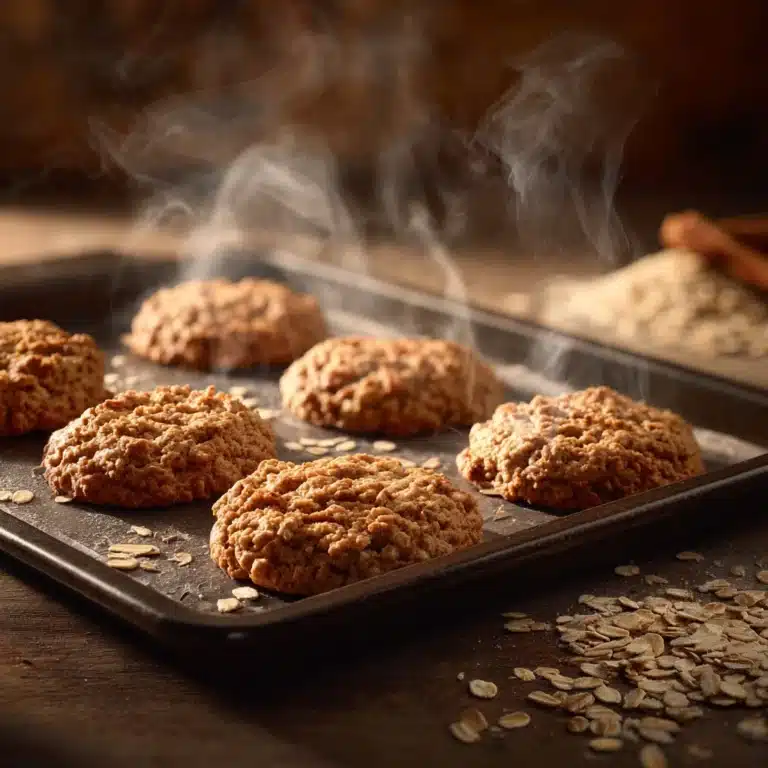colore Swiss Meringue Macaron Recipe
If you’ve ever dreamed of mastering the art of delicate, crisp, and oh-so-lovely macarons, then this Basic Swiss Meringue Macaron Recipe is your perfect starting point. Swiss meringue techniques ensure buttery-smooth, glossy shells with just the right amount of chewiness inside, while the gentle double boiler heating keeps your meringue silky and stable. Whether you’re a beginner or an experienced baker, this recipe will guide you to create beautiful macarons that melt in your mouth and look absolutely irresistible.
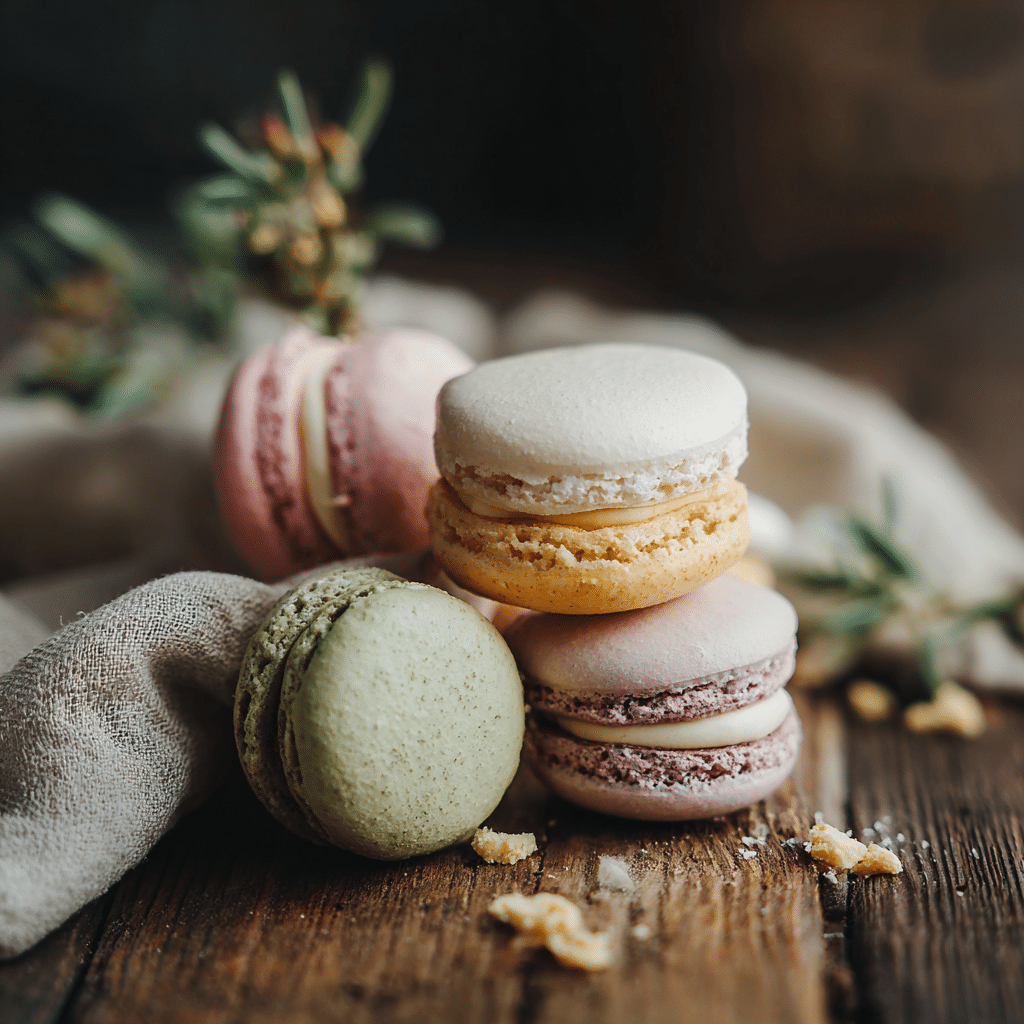
Ingredients You’ll Need
Believe it or not, macarons rely on a handful of simple yet essential ingredients that come together to create their signature texture and flavor. Each one plays a crucial role in ensuring your batch turns out with shiny, smooth shells and feet that are perfectly formed.
- White granulated sugar (100 grams): This sweetens and stabilizes the meringue during the heating and whipping process.
- Egg white powder (4 grams, optional): Adds extra protein, helping to produce fuller shells and soothes the batter when adding intense colors.
- Egg whites (100 grams): The core foundation for your Swiss meringue, providing structure and lift.
- Almond flour (105 grams): Gives the macarons their nutty flavor and tender crumb.
- Powdered sugar (105 grams): Blended with almond flour to keep your shells delicate and smooth.
- Food coloring (optional): Use gel or powder to add a splash of personality without altering batter consistency.
How to Make Basic Swiss Meringue Macaron Recipe
Step 1: Prep Your Ingredients and Tools
It’s always a good idea to start with organization. Gather all ingredients measured precisely with a scale, line your baking sheets with parchment paper or silicone mats, and have your piping bag fitted with a round tip ready. Wiping your tools with vinegar beforehand removes any trace of grease that could deflate your meringue, ensuring perfect rise and structure.
Step 2: Make the Swiss Meringue
Begin by placing your egg whites, sugar, and optional egg white powder in a heatproof bowl over barely simmering water. Whisk energetically until the sugar dissolves completely—you can test by rubbing a bit between your fingers; if it feels smooth, you’re good to go! Then transfer the warm mixture to a stand mixer and whip from low to high speed until the meringue is glossy and forms stiff peaks. This step takes patience, but it’s the secret behind that shiny shell and tender interior we all crave.
Step 3: Mix the Dry Ingredients
While your meringue whips, sift together the almond flour and powdered sugar to remove any lumps. This ensures a smooth batter and prevents bumpy shells after baking.
Step 4: Combine via Macaronage
Fold the dry ingredients gently into the meringue using a spatula, working to build a thick, flowing batter with a shiny appearance. This process, known as macaronage, is critical—overmix and you’ll lose air; undermix and the batter won’t spread evenly. Use tests like forming a slow figure 8 with the batter or the “teaspoon test” on parchment to find the ideal consistency.
Step 5: Pipe Your Macarons
Transfer the batter to your piping bag and pipe circles directly over your lined baking sheets. Don’t forget to bang the tray lightly to release any air bubbles, then use a toothpick to pop any stubborn bubbles on the surface. Setting the shells aside to rest allows a dry “skin” to form, which helps in getting those pretty feet when baked.
Step 6: Bake to Perfection
Bake your shells at a moderate temperature – around 310ºF in a well-preheated oven – adjusting for your specific oven setup. Bake one tray at a time, rotating if necessary to promote even baking. Your macarons are done when they have formed feet and feel firm to the touch, no longer jiggly. Let cool completely before filling.
How to Serve Basic Swiss Meringue Macaron Recipe
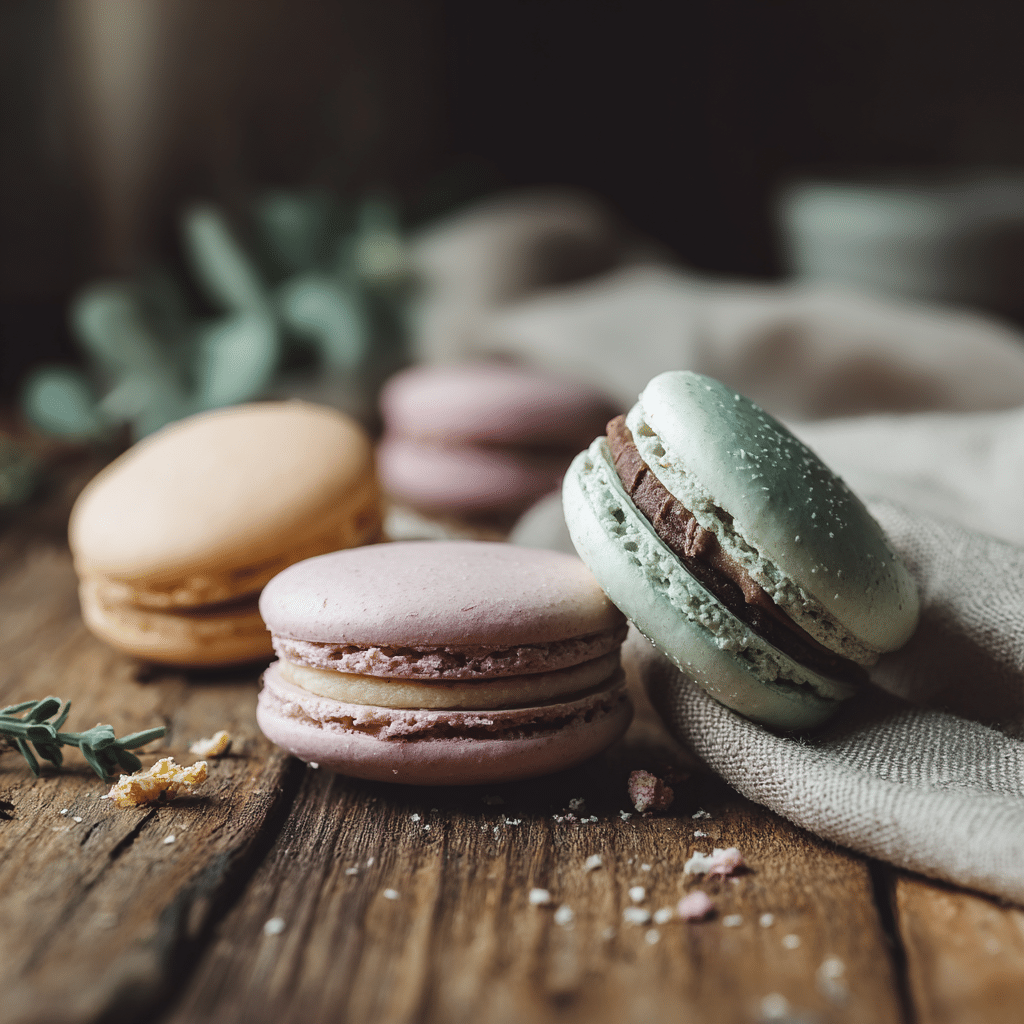
Garnishes
Once your macarons are filled, you can top them with sprinkles, edible glitter, or even a dusting of powdered sugar to add a charming finishing touch. Fresh berries or a drizzle of chocolate over the assembled macarons also make for an elegant presentation with a burst of flavor.
Side Dishes
Macarons pair beautifully with a light cup of tea, freshly brewed coffee, or even a glass of sparkling wine for a special occasion. These treats shine as a companion to simple desserts like fruit tarts or creamy puddings, balancing sweetness with texture.
Creative Ways to Present
Try arranging these colorful beauties on tiered stands for a stunning dessert table centerpiece. Gift-boxed with tissue paper and a handwritten note, macarons become a thoughtful, homemade present. Or try sandwiching unexpected fillings like lavender cream, passionfruit curd, or salted caramel for a personalized twist on the classic recipe.
Make Ahead and Storage
Storing Leftovers
Unfilled macaron shells can be stored in an airtight container in the refrigerator for up to five days without losing their delicate texture. This makes preparing batches ahead of time very convenient for parties or special events.
Freezing
One of the best parts about this Basic Swiss Meringue Macaron Recipe is that you can freeze the shells for one to two months. Simply pack them carefully to avoid crushing, and thaw them in the refrigerator before using. Upon thawing, they’ll retain nearly the same freshness as when first baked.
Reheating
Macarons are best enjoyed at room temperature to fully appreciate their texture and flavor. If you prefer, let them sit out for 10 to 15 minutes after removing from the fridge. Avoid microwaving, as this can cause the shells to become chewy or soggy.
FAQs
Why use the Swiss meringue method for making macarons?
The Swiss meringue method gently heats the egg whites and sugar together, dissolving the sugar completely before whipping. This produces a silky, stable meringue that’s less likely to overwhip and gives you macarons with a glossy finish and better texture.
Can I skip the egg white powder in this recipe?
Yes, egg white powder is optional. It helps create fuller shells and is especially useful when adding strong colors to your batter, but you can achieve great results without it by carefully following the whipping and folding steps.
Why is resting the macaron shells recommended?
Resting lets the shells form a dry skin, which prevents cracking and helps them develop those characteristic feet during baking. However, some ovens and conditions allow for a no-rest method, so feel free to experiment to see what works best for you.
What kind of food coloring should I use?
Gel and powder food colorings are preferred because they won’t affect the batter’s consistency like liquid coloring can. Start with small amounts to avoid overmixing to a point where your batter becomes too runny.
How do I know when my batter is ready to pipe?
Look for a batter that flows slowly off your spatula but holds its shape when drizzled back into the bowl. The figure 8 test or the teaspoon test can help—you want the batter to form ribbons that slowly blend back into the rest without breaking apart.
Final Thoughts
Making macarons might seem daunting, but with this Basic Swiss Meringue Macaron Recipe, you’re equipped with a reliable, step-by-step approach that will boost your confidence and your baking skills. There’s nothing quite like the joy of biting into a homemade macaron that you crafted with care. So gather your ingredients, embrace the process, and enjoy every moment of creating these charming little treats that are sure to impress everyone lucky enough to try them!


